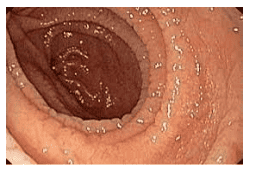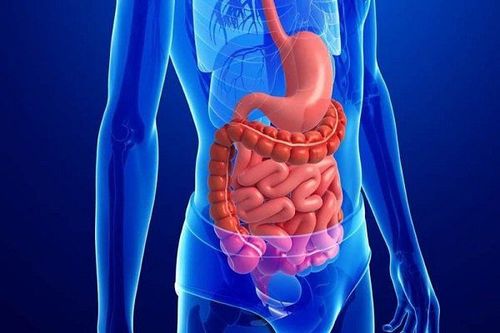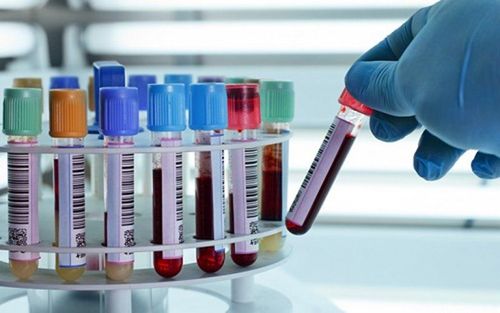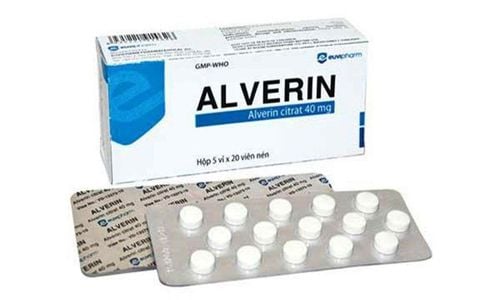This is an automatically translated article.
Posted by Master, Doctor Mai Vien Phuong - Department of Examination & Internal Medicine - Vinmec Central Park International General Hospital
Celiac is a chronic autoimmune disease caused by a reaction to gluten in food. The disease has a genetic factor and in clinical practice, manifestations are quite diverse from no symptoms to faint symptoms or severe cases can have typical malabsorption symptoms such as chronic diarrhea, anemia, etc. iron deficiency blood, thin weight loss...
Celiac disease is considered a rare digestive disorder, which is common in children, but in recent years, the detection rate of this pathology has increased along with the recognition of many clinical symptoms in the street. digested and seen in many age groups.

1. Pathogenesis of Celiac disease
Guten plays an important role in the pathogenesis of Celiac. Gluten is the prolamin (plant protein) in grains including gliadin in wheat, Sealin in rye, hordein in barley. These are peptides that are rich in proline and glutamine and are therefore difficult to be broken down by gastric acid, pancreatic enzymes or intestinal enzymes, even in healthy individuals. In normal humans, the epithelial layer of the intestinal mucosa does not allow passage of the wheat-derived gliadio peptide chains. Celiac is a chronic autoimmune disease caused by exposure to gluten in the lining of the digestive tract. In this disease, the physiological protective barrier of intestinal epithelial cells is disrupted by the passage of giadin chains through the epithelial layer, activating a variety of immune mechanisms that damage intestinal epithelial cells.
Group of diseases with high rate of accompanying Celiac disease:
Malabsorption syndrome, diarrhea with weight loss, chronic diarrhea, unexplained weight loss. Metabolic bone disease, early osteoporosis, thyroid disease Abdominal bloating, postprandial belching, irritable bowel syndrome Increased liver enzymes Atrophy of intestinal villi incidentally detected on endoscopy/histopathology Peripheral neuropathy vi, Herpes dermatitis, aphthous ulcers, enamel hypoplasia Down syndrome, Turner...

2. What consequences can Celiac disease lead to?
Celiac disease can have serious consequences if not detected and improved early. Some risks caused by Celiac disease such as:
Gluten damages the lining of the small intestine in people with Celiac disease. This condition will prevent your body from absorbing many nutrients from food leading to fatigue, susceptibility to infections and a host of other disorders such as blood clotting disorders.... Celiac disease leads to an increased risk of both lymphoma and carcinoma of the small intestine Long-term and untreated disease can lead to other complications, such as ulcerative colitis and scarring of the small intestine .
3. Clinical symptoms
The clinical manifestations of Celiac are quite diverse, can typically include symptoms of malabsorption syndrome (diarrhea, steatorrhea, weight loss, growth retardation in children) or atypical or absent. Symptoms In addition, the disease may manifest in other organs along with typical or atypical manifestations
3.1. Gastrointestinal symptoms

Malabsorption with typical symptoms such as prolonged diarrhea, abdominal pain, growth retardation, and weight loss are common in children. Adults and older children may have atypical symptoms or be confused with irritable bowel syndrome. Sometimes patients have no obvious gastrointestinal symptoms but show signs of nutritional deficiencies, the most common of which are iron, vitamin D, vitamin B12, B6 and zinc deficiency.
Iron deficiency is reported in nearly half of all new diagnoses in adults, so it is one of the indications for Celiac screening. A gluten-free diet helps restore iron deficiency anemia in about 6-12 months while zinc deficiency can recover quickly after a few weeks. Patients with folate or vitamin B12 deficiency may develop megaloblastic anemia and neurologic manifestations associated with this condition such as sensory disturbances, peripheral neuropathy...
Intolerance Lactose: When using milk and dairy products, it can damage the intestinal mucosa and the patient has symptoms of lactose intolerance (abdominal pain, diarrhea, abdominal bloating, bloating... Malabsorption syndrome... collection: Diarrhea, thin weight loss, bloating, open diarrhea .. these typical symptoms are less and less common in Celiac patients Nutritional deficiency: Deficiency of vitamins A, D, E, K, vitamins group B, reduced absorption of iron, calcium, micronutrients, folic acid.
3.2 Extra-gastrointestinal symptoms

For children, common symptoms are delayed puberty and growth retardation. For adults, extra-gastrointestinal manifestations are quite diverse. Dermatitis herpetiformis is characterized by widespread, symmetrical, red vesicular lesions, which the patient may feel itchy. Oral lesions such as aphthous ulcers and enamel hypoplasia may occur with the same frequency as osteoporosis.
The incidence of Celiac in patients with unexplained elevations of liver enzymes can be as high as 9% and takes 6-12 months to recover when maintaining a gluten-free diet. Hepatitis in Celiac is usually progressive, benign, reversible. Some patients report muscle pain and do not always respond to the gluten-free diet. In addition, early atherosclerosis has been reported in young patients, particularly rapidly progressing in patients with co-existing type 1 diabetes.
There have been some reports of Celiac patients with myocarditis but the relationship has not been confirmed. A meta-analysis of observational studies found that infertility is associated with untreated Celiac disease. Peripheral neurologic deficits and cognitive impairment have also been reported in both adults and children with Celiac disease, and in many cases, neurological manifestations occur before the patient is diagnosed.
The incidence of these symptoms according to the evaluation questionnaires in one study in Celiac patients was up to 39%. Headache, growth retardation, disorders such as hypotonia, hyperactivity in children with the disease were higher than in the control group of healthy children. In adults, up to one third of patients have a history of mental disorders such as depression, personality changes... Mechanisms explaining neuropsychiatric disorders in Celiac disease are not really clear yet. Often these symptoms do not improve much with a gluten-free diet. However, with early diagnosis and early elimination, the response to symptoms will be better, especially in the group of patients with positive anti-gliadin antibodies.

Anemia: Mainly due to malabsorption of iron, folic acid, sometimes this is the first manifestation of Celiac Dermatitis Herpes: An autoimmune reaction that occurs when eating gluten with the appearance of a rash on the skin. , skin biopsy showed IgA deposition. Hepatobiliary symptoms: Increased transaminase levels in 20-40% of patients at the time of diagnosis, when on a gluten-free diet, this condition improves. May be accompanied by rare autoimmune diseases such as primary sclerosing cholangitis, autoimmune hepatitis... Increased risk of certain types of cancer: Increased risk of certain types of lymphoma, gastrointestinal cancer, bile liver. A gluten-free diet may reduce the risk. Neurological symptoms: Possible peripheral neuropathy, gluten cerebellar damage, cognitive impairment. Oral lesions: Enamel hypoplasia, aphthous ulcers, lichen planus, cheilitis Osteoporosis Osteoporosis: Approximately one-third of Celiac patients have osteoporosis associated with reduced calcium and vitamin D absorption Associated abnormalities hematologic system: thrombocytopenia, leukopenia, hypersplenism, coagulation disorders due to vitamin K deficiency Reproductive system abnormalities: delayed menstruation, secondary amenorrhea, early menopause, Infertility in both men and women Vinmec International General Hospital is a prestigious address trusted by many patients in performing diagnostic and treatment techniques for chronic inflammatory bowel diseases... Along with that, at Vinmec Hospital, performing a diagnosis through gastrointestinal endoscopy with the Olympus CV 190 endoscope, with NBI (Narrow Banding Imaging) function, results in pathological analysis images. mucosa more clearly than conventional endoscopy, detecting ulcerative lesions in the gastrointestinal tract. Vinmec Hospital with modern facilities and equipment and a team of experienced experts who are always dedicated in medical examination and treatment, customers can rest assured with the gastrointestinal endoscopy service at General Hospital. Vinmec International Faculty.
Please dial HOTLINE for more information or register for an appointment HERE. Download MyVinmec app to make appointments faster and to manage your bookings easily.














